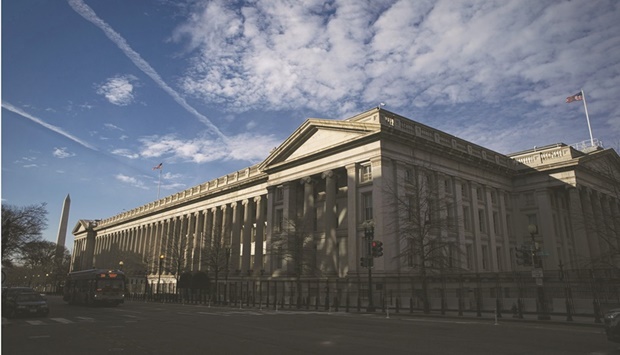Treasuries extended their surge on Friday as new data on US manufacturing added fuel to concern that Federal Reserve rate hikes will lead to a recession.
Benchmark yields slumped across the curve, with those in the belly and the short-end leading the way and the five-year rate at one stage plummeting by more than a quarter of a percentage point to 2.78%. The widely watched 5- to 30-year yield curve differential steepened by more than 10 basis points on the day. Benchmark yields closed off their lows, with the five-year rate at 2.88%, in a shortened session before the extended Independence Day weekend.
The bond market was already rallying sharply across the curve on recession concerns before the Institute for Supply Management’s manufacturing gauge fell more than expected in May to 53, while new orders and employment dropped below a reading of 50, entering contraction territory. The scale of the shift in yields and the curve was exacerbated by poor liquidity ahead of the holiday weekend. Technical factors were also in play as the 10-year yield breached its 50-day moving average for the first time in a month.
“These are big moves and it reflects the combination of constrained liquidity and more evidence that this economy is slowing,” said Gregory Faranello, head of US rates trading and strategy at AmeriVet Securities. “This is what the Fed wants to see and the debate at their July meeting will be 50 or 75” basis-point hike. “The Fed is not looking to slow down, so the front-end rally should run out of steam.”
The 10-year note faces a tough barrier around 2.72%, but a weak employment report at the end of next week, would “further ignite the bond market rally,” Faranello said. The 10-year yield closed down 13 basis points at 2.88%, after falling as low as 2.79%.
That prospect of weaker data and growing potential of a recession has fuelled demand for protection, with traders paying the most since March to hedge against a deeper drop in 10-year Treasury yields.
The latest leg down in yields was accompanied by Fed-dated swap contracts pricing in around 173 basis points of additional tightening into the central bank’s December meeting, a drop of 11 basis points from the close on Thursday. The shift in swap pricing of the Fed’s policy trajectory has seen the market reduce expectations of a peak rate fall to around 3.3% from above 4% last month, with the end of central bank tightening brought forward from mid-2023 to around February.
“The terminal rate pricing has collapsed,” said William O’Donnell, managing director rates desk strategy at Citigroup Inc. “More inflation is now good news for the bond market as it means more Fed tightening that increases the risk of a deeper and earlier recession.”
Traders have upped the prospect of rate cuts next year, with the gap between eurodollar rate futures from the December 2022 and 2023 contracts inverting as much as -75.5 basis points on Friday, and this differential has shifted almost 50 basis points from a peak on Tuesday.
The latest leg of the global bond-market rally gained speed after Fed Chair Jerome Powell said Wednesday that the risk of harm to the economy from higher rates was less important than restoring price stability.
The prospects for a US recession were enhanced Thursday after figures showed personal spending for May rose 0.2%, half the expected increase. The price index for purchases rose 0.6% versus an expected 0.7%, supporting the view that an inflation peak is being established.
Market-implied inflation expectations have been falling steadily along with nominal yields over the past three weeks. Among them, the five-year forward estimate of the five-year expected inflation rate briefly fell below 2% earlier on Friday, where it last traded in February before spiking to 2.6% in April. The Fed targets a 2% average inflation rate over time. The shift in the US bond market to pricing in recession risk is being emulated globally. In Australia, the three-year yield tumbled as much as 21 basis points, just days before its central bank is expected to announce a half-point rate increase, while European yields also dived.
Germany’s two-year bond posted its biggest weekly trading range since 2008 as the market rapidly pares bets on rate increase by the European Central Bank.
The yield on the security - the most sensitive to changes in policy expectations - has more than halved from a high of 1% on Tuesday to trade as low as near 0.40% on Friday. Traders are bracing for around 140 basis points of hikes this year, compared with as many as 190 basis points on June 16, with the repricing being spurred by speculation inflation in the region is showing early signs of cooling.

The US Treasury building in Washington, DC. Treasuries extended their surge on Friday as new data on US manufacturing added fuel to concern that Federal Reserve rate hikes will lead to a recession.
